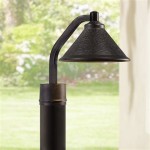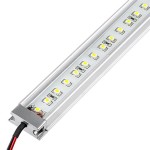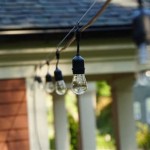Best Outdoor Patio Flooring Options: A Comprehensive Guide
Creating an inviting and functional outdoor patio space begins with selecting the right flooring. The ideal flooring material should complement the aesthetic of the home and garden, withstand the elements, and provide a comfortable and safe surface for relaxation and entertainment. Numerous options are available, each with its own set of advantages and disadvantages. This article explores some of the best outdoor patio flooring options, examining their key features, benefits, and considerations for implementation.
Durability and Weather Resistance: Key Considerations
Outdoor patio flooring is constantly exposed to the elements, including sunlight, rain, snow, and temperature fluctuations. Consequently, durability and weather resistance are paramount considerations. The chosen material should be able to withstand these conditions without significant deterioration, such as cracking, fading, or warping. Different materials offer varying degrees of resistance to these factors, so understanding these qualities is essential for making an informed decision. Freeze-thaw cycles, in particular, can be detrimental to some materials, causing them to crack and crumble over time. UV exposure can fade colors and weaken certain types of plastics and composites.
Furthermore, consider the level of maintenance required to keep the flooring looking its best. Some materials, such as natural stone, may require occasional sealing to protect them from moisture and staining. Others, like composite decking, are virtually maintenance-free. The choice will depend on individual preferences and the amount of time and effort one is willing to invest in upkeep.
Another related factor is slip resistance. Outdoor surfaces can become slippery when wet, posing a safety hazard. Choosing a material with a textured surface or applying a slip-resistant coating can help to mitigate this risk. Certain materials, such as textured concrete pavers, naturally offer better slip resistance than others, such as polished stone.
Popular Flooring Materials: A Detailed Overview
Numerous materials are suitable for outdoor patio flooring, each with unique characteristics. Understanding these distinctions is crucial for selecting the option that best meets one’s specific needs and preferences.
Concrete: Concrete is a versatile and durable option for patio flooring. It can be poured as a slab, stamped with various patterns and textures, or used in the form of pavers. Poured concrete provides a seamless surface, while pavers offer design flexibility and ease of repair. Stamped concrete can mimic the look of more expensive materials, such as natural stone, at a fraction of the cost. Concrete is also relatively affordable and requires minimal maintenance. However, it can be prone to cracking in colder climates and can become hot in direct sunlight. Sealing the concrete can help protect it from staining and water damage.
Natural Stone: Natural stone, such as flagstone, slate, and travertine, offers a timeless and elegant look for outdoor patios. Each type of stone has its own unique color variations and textures, adding character and visual interest. Natural stone is incredibly durable and can withstand harsh weather conditions. However, it can be more expensive than other flooring options, and installation can be labor-intensive. Some types of natural stone may also require sealing to protect them from staining. Flagstone, with its irregular shapes and sizes, creates a rustic and natural appearance. Slate is known for its dark color and smooth surface. Travertine offers a warmer, more Mediterranean feel.
Brick: Brick is a classic and durable material that can add a touch of charm to any outdoor patio. It is available in a variety of colors and textures, allowing for creative design possibilities. Brick is also relatively affordable and easy to install. However, it can be susceptible to staining and may require periodic cleaning. Brick pavers can be arranged in various patterns, such as herringbone or basketweave, to create visual interest. The warm, earthy tones of brick complement a wide range of architectural styles.
Composite Decking: Composite decking is a manufactured material made from a blend of wood fibers and recycled plastic. It is designed to mimic the look of natural wood while offering superior durability and low maintenance. Composite decking is resistant to rot, insect damage, and fading, making it an ideal choice for outdoor patios. It is also available in a wide range of colors and styles. However, it can be more expensive than some other flooring options. The lack of natural wood grain can sometimes be a visual drawback for those seeking a truly authentic aesthetic.
Tile: Outdoor-rated tile, such as porcelain or ceramic, is a durable and versatile option for patio flooring. It is available in a wide range of colors, patterns, and sizes, allowing for endless design possibilities. Tile is also resistant to staining, fading, and water damage. However, it can be slippery when wet, so it is important to choose a tile with a textured surface or apply a slip-resistant coating. Proper installation is crucial to prevent cracks and ensure long-term durability. Porcelain tile is generally more durable and water-resistant than ceramic tile, making it a better choice for outdoor applications.
Wood Decking: Wood decking provides a warm and natural look for outdoor patios. However, it requires regular maintenance, such as staining or sealing, to protect it from the elements. Different types of wood, such as cedar, redwood, and pressure-treated lumber, offer varying degrees of durability and resistance to rot and insect damage. Wood decking can be susceptible to warping and cracking if not properly maintained. While initially more affordable than composite options, the long-term maintenance costs can be significant.
Rubber Pavers: Rubber pavers are made from recycled tires and offer a resilient and comfortable surface for outdoor patios. They are also slip-resistant and shock-absorbing, making them a safe option for families with children. Rubber pavers are available in a variety of colors and styles and are relatively easy to install. However, they can be more expensive than some other flooring options, and they may fade over time with prolonged exposure to sunlight. Their eco-friendly composition is a significant advantage for environmentally conscious consumers.
Installation and Cost Considerations
The installation process and associated costs are crucial factors to consider when selecting patio flooring. Some materials, such as interlocking pavers or composite decking, can be relatively easy to install as a DIY project, while others, such as natural stone or poured concrete, may require professional installation. Professional installation will increase the overall cost but can ensure a proper and long-lasting result. The complexity of the installation, the size of the patio, and the type of material chosen will all impact the total cost.
Furthermore, consider the cost of necessary tools and equipment. For example, installing pavers may require a plate compactor to ensure a level surface. Pouring concrete requires specialized tools and expertise. A thorough assessment of the installation requirements and costs is essential before making a final decision. Obtaining quotes from multiple contractors is recommended to ensure competitive pricing.
Long-term cost considerations are also important. While some materials may have a lower initial cost, they may require more frequent maintenance or replacement over time. Materials with higher upfront costs but lower maintenance requirements may prove to be more cost-effective in the long run. Consider the life expectancy of the material and the potential for future repairs or replacements when evaluating the overall cost. For example, while wood decking might be cheaper to install initially compared to composite decking, the costs for staining and sealing every few years add up over time.

7 Flooring Options For A Beautiful Patio Absolutely Outdoors

14 Outdoor Flooring Options Ultimate Guide

The 5 Best And Worst Flooring For An Outdoor Patio

Outdoor Flooring Options For Style And Comfort 10 Ideas 2024

Jazz Up Your Front House With These Stunning Outdoor Flooring Ideas

Top 7 Est Patio Flooring To Choose From

Tiling The Complete Guide To Choosing Best Outdoor Tile

Which Tiles Are Best For Outdoor Flooring Walls And Floors

What Is The Best Patio Flooring Over Concrete Options

Outdoor Flooring Options For Style And Comfort 10 Ideas 2024







